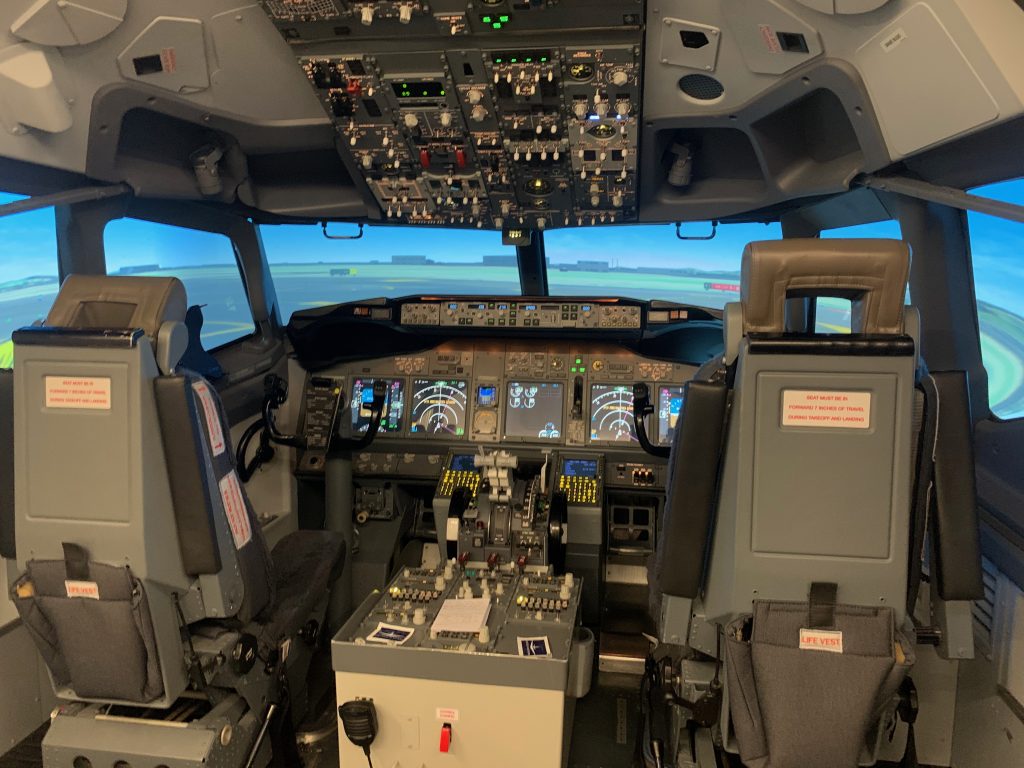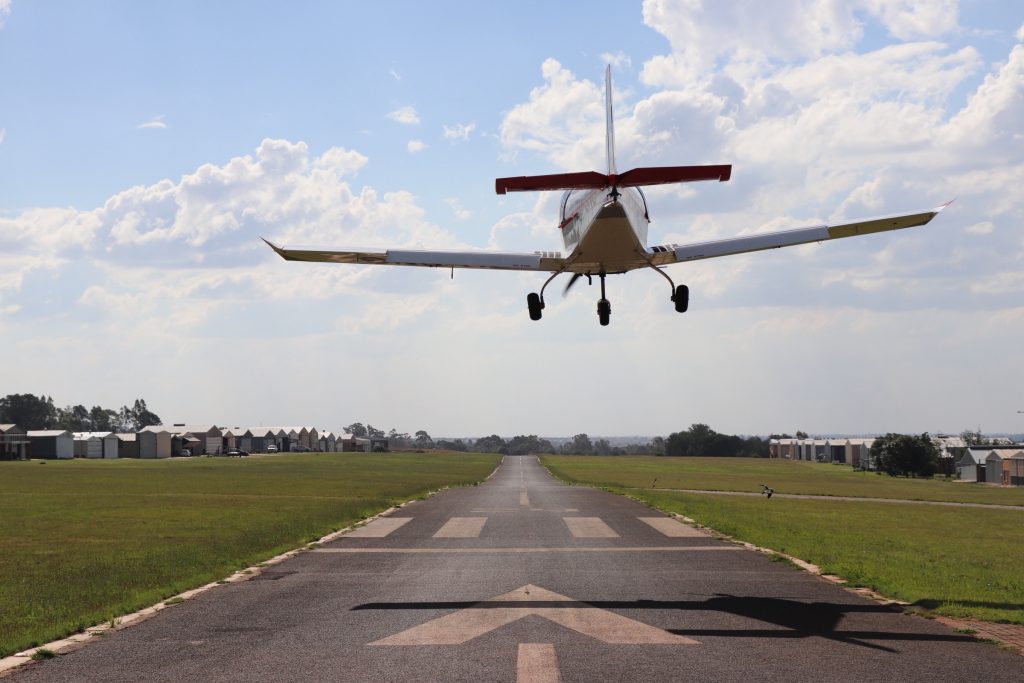Getting ready to sit your first ATPL exam can be pretty daunting.
Here’s an idea of what to expect, based on my experience of sitting exams at four different centres in the UK.
While I took exams in the UK, I’m hoping that some of what I experienced will be true for exams taken in other countries. Let me know if you had any drastic differences!
For reference, I took my first exam on November 19th 2019, and my last on 19th March 2020. During that time I took exams at Bristol Ground School, CATS Aviation in Luton, CAE in Oxford and at the CAA Headquarters at Gatwick Airport.
What to expect at an exam centre
Exam centres vary, and the facilities they offer could have an impact on your exam performance. Here’s a quick summary of what I found at the centres I used:
- Bristol Groundschool. BGS is based on an industrial estate in Clevedon. It’s got a good amount of parking, especially for very early exams, but for later time slots you might have to park on the roads around the centre. As a facility, BGS was my favourite by a mile. Once through the main entrance you then go upstairs (I didn’t find it to be the most amazingly signposted place), through a small reception area and into a large student common room. There is a mixture of sofas and bistro tables, with a kitchen facility available for candidate use with the important ability to get fresh water or make a hot drink. The exam rooms are just off this student room. I found this room to be really comfortable and conducive to getting calm and focussed before an exam! I preferred to take early exam sessions where possible and get there well in advance, and one key feature about BGS was that it was always open when I got there – even at 7am for a 9am exam. The building feels secure, so I didn’t feel as though I needed to pack up all of my things when I needed to use the toilet facilities.
- CATS in Luton. CATS is located within a fairly large building that houses a number of offices. There is ample parking, though you might have to walk. The main entrance brings you to a foyer/lobby and it’s not immediately obvious where you are supposed to go. I had friends who had taken exams there before me, who told me to stay in the lobby area. There are some tables and a small takeaway coffee shop for you to be able to get refreshments. This lobby area felt less comfortable than BGS, and is much more open to the public, so I unless I was waiting with friends I would absolutely not leave my belongings behind if I was to go use the toilet facilities. Also, I arrived at the building early (~7:00am) for a 9:00am exam, but had to sit in the carpark for over an hour until I was able to follow someone in through an employee entrance and make my way to the lobby. The main entrance was not unlocked until very close to 9:00am, and I saw other candidates struggled to get in. Approximately 15 minutes before the scheduled exam time the invigilator came to collect any candidates from the lobby. It’s a short walk up some stairs and along a corridor to the exam room.
- Oxford. At the time I took my exams, the Oxford centre was located at CAE, however this now appears to have moved to Leading Edge Aviation. While both are located at Oxford airport, clearly my experience of CAE will have no resemblance to the current centre.
- CAA Headquarters, Gatwick Airport. As you would expect, the CAA HQ is the most formal of the centres that I visited. Parking was more restricted here than at any other centre, with very few alternatives nearby. Remember, this is Gatwick Airport, so there are no overflow car parks like at the other centres. It’s absolutely best to arrive early to make sure you’re able to park – or arrive by Uber or public transport. On arrival you’re met with a security desk. Your bag may be searched, before being shown through to a lounge/waiting area at the bottom of the large main auditorium. There’s a small coffee bar, and a huge amount of seating to sit and study at before your exam. The environment isn’t particularly comfortable compared to some of the smaller venues – this definitely feels more “corporate” (as you would expect). At the appropriate time you’ll be called through to an area with lockers, and your locker number corresponds to the desk you’ll be assigned to in the exam room. The exam room itself is the largest of the rooms I experienced, with students have a large desk each – and lots of people in the room.
The exam room and the exam itself
UK CAA exams are taken on a computer. Some of the exams I sat used a desktop, some used a laptop, but all obviously use the same exam software. Importantly, the exam program is really simple and clear to understand. Also, how exam rooms are laid out can vary significantly. At some centres I had an entire two-person desk to myself with a laptop, so plenty of space to spread out charts. At other centres I shared a table of the same size with another candidate, feeling much more cramped. In my experience, I found Bristol Ground School and the CAA Headquarters to have the most space. Luton had a smaller desk with all candidates around the outside of the room, while in Oxford the desks were small and the desktop computer took up a lot of the available space (not that big of a deal for Comms though!).
The invigilators will call your name and direct you to sit in a particular location.
In addition to your computer, on your desk you will find a candidate login form that you must sign prior to taking an exam. Hot tip: Check the name on your exam. I was once directed to a desk that had another candidates details on – and he had signed his name on my form by the time the mistake was realised. Double check the information on the form in front of you!!
Depending on the exam centre, you may be given some paper for doing calculations on, or you may have to ask for it. Each centre I went to also gave me a pencil (and sometimes a pen) to use for the exam. In fact, when I took my exams the UK CAA made it clear that I was only to use their writing equipment provided, and that I would not be able to use my own.
Finally, depending on the exam, you may find that you’re provided with an Annexe of figures or charts appropriate to your exam. You’ll be told not to open it until the exam has started.
When directed, you’ll be given a login and password for the computer, and you’ll be told when to click the Start Exam button.
Equipment
Your exam booking confirmation will outline the permitted materials for your exam. Read it thoroughly! Also, there will be students in your exam session doing exams for different subjects to you, so don’t be put-off if someone arrives with a Jeppesen Route Manual, and you’re about to sit Air Law.
The items permitted (depending on the exam) could be:
- An approved calculator
- An approved flight computer
- The Jeppesen General Student Pilot Route Manual
- A clear plastic ruler
- A protractor
- Compass (no case though!)
- Fine-tip markers for charts.
And of course there’s a list of items banned from the exam room too, including:
- Mobile phones
- Watches
- Recording or communication devices
- A pencil case
- Your own writing equipment.
- Some centres won’t allow you to have the lid/slide cover for your calculator
You MUST also bring the identification with you that you used to sign up for the exam portal online. I was sat in the room with an exam candidate who was refused permission to sit the exam he was expecting to take because he had left his ID in his hotel room.
Before your exam starts the invigilator will come around the room to check your ID and look at the equipment you have brought to ensure it’s suitable for the exam you’re about to take.
When you're ready to click Submit
If you’ve finished before the end of the session, and you really don’t want to stay to the end, then you must click the appropriate “Submit Exam” button, then gather your belongings as quietly and with as much respect to those still working as possible, and exit the room. You’ll leave the annexe/workbook on the desk, as well as any paper used for calculations.
My top tops!
- Get to the centre early. Be well rested and fed. This should be common sense: allow plenty of extra time for traffic and parking, and then for acclimatising to the centre before your exam.
- As soon as you’ve pressed “Start Exam”, write out all the formulas you’ve been holding in your head. Get them onto paper as soon as you can – that way you won’t have to try to remember a formula or calculation in the middle of the exam. I would spend the hour before an exam writing out all the formulas for an exam over, and over, and over again. I would do it to the point where I could have conversations with other people and still be accurately writing out the formulas. Then when it came time to start the exam, I only had to write out the formulas just one more time.
- Write comments on questions that you’re uncertain about. There is an appeals process if you feel you exam score doesn’t reflect your performance – and you may come across questions that you feel are misleading or inaccurate in what they’re asking for. You have the ability within the exam software to comment on those questions, so do it! If you go back to challenge and the reviewing team see you’ve flagged some questions and given sensible reasons for doing so, you may win an appeal. But if you don’t make any comments, you’re not showing the appeals team that you had any uncertainty about any of the questions when you took the exam.








